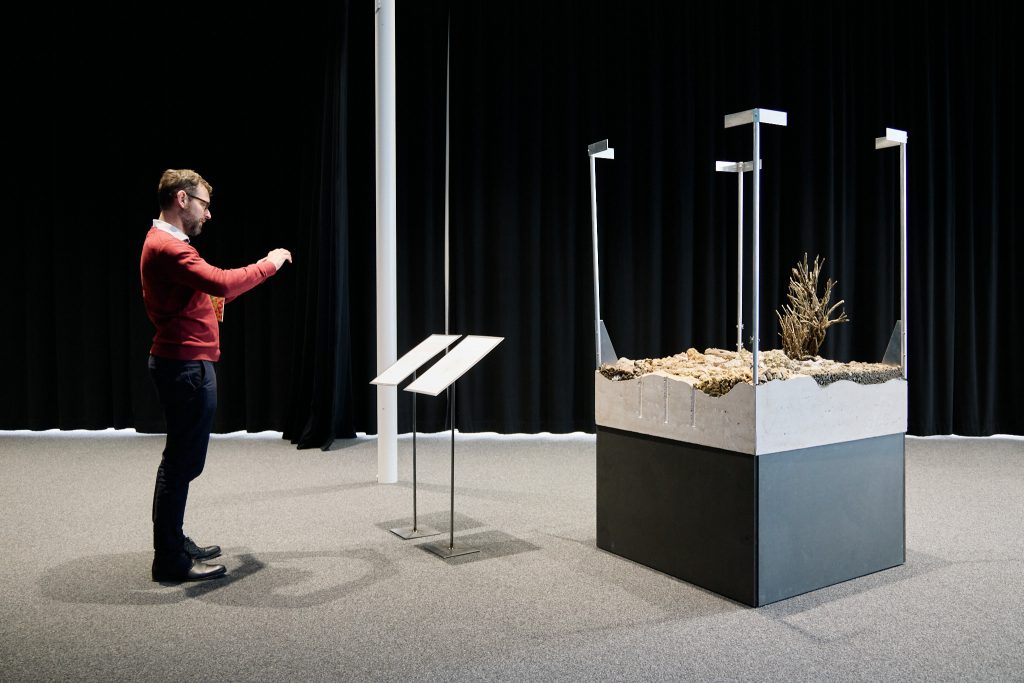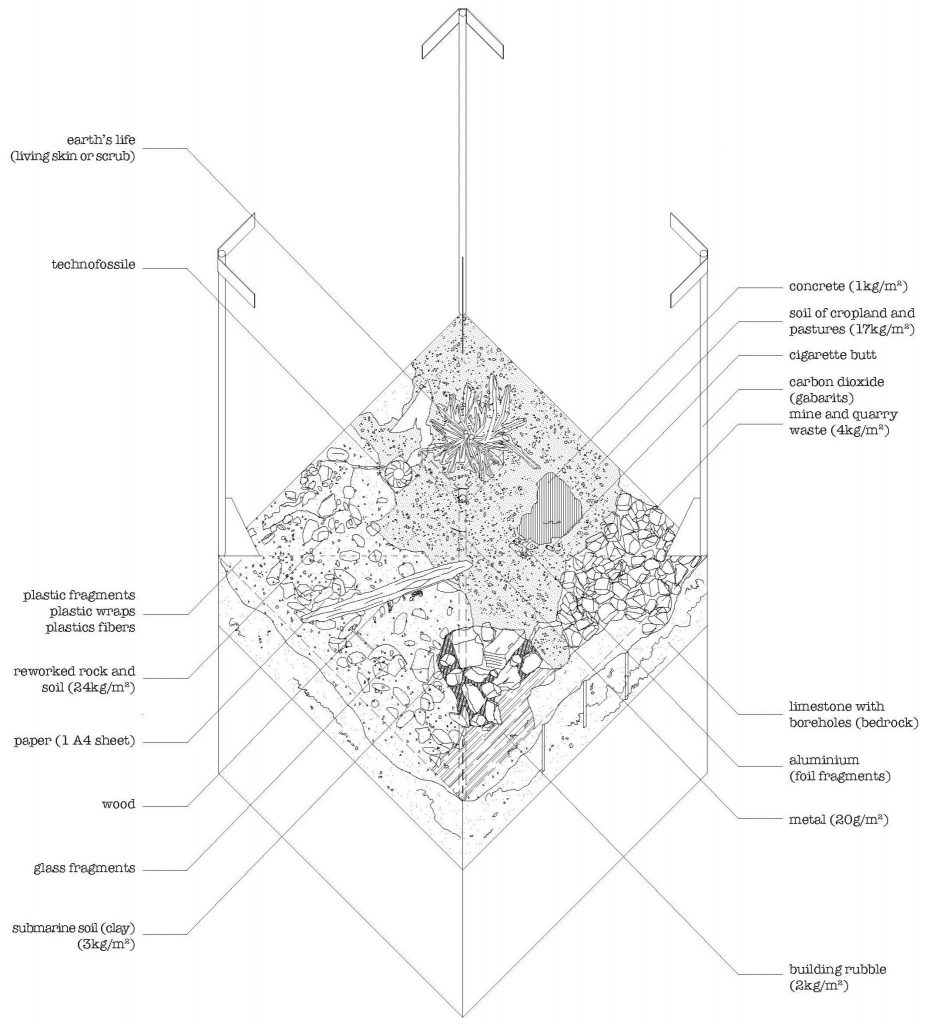
Humanity has transformed the earth so fundamentally it is almost impossible to comprehend the scale of change. To bring anthropogenic change into comprehension, this prototype model shows the cumulative amount that would, on average, appear on one square meter of the earth’s surface. This method was proposed by the renowned geologist and paleontologist Jan Zalasiewicz, who is advising us as we design and build the prototype model.
Zalasiewicz estimates that humans have modified a total mass of 30 trillion tons on Earth. For us, this amount of material accumulation is completely incomprehensible. The power of this model is thus as a framework for bringing the immense down to size. It derives its power from its size, scale, and the use of real materials. One square meter is a size that is understandable to anyone and part of the system of measurements we use to divide and quantify space and land. The scale of 1:1 puts the amounts in direct relation to what we actually use and can hold and allows us to imagine what it means when this is replicated across the whole globe. Using real materials like half a cigarette butt or one square meter of kitchen plastic wrap gives tactility to what makes up anthropogenic change.
The prototype is the beginning of a larger research project that will include collaboratively verifying the underlying figures and data sets. We are in the process of building a second prototype with more fidelity to actual conditions that would demonstrate that most material accumulation is recent and still in use. Finally, departing from Zalasiewicz’s original idea, we see this model as a powerful didactic instrument. Future comparative models will be tested to show differences across time and place in rates of accumulation and extraction.
Using the tools of architects, such as modeling, we can show things about Earth that are otherwise hard to grasp. As architects, we have a unique position between design, technology, and the social, and we have a critical role in influencing policymakers, citizens, and students to change how we view and shape our environment.
Pilot Model






Public Outreach
Exhibitions:
- ENAC Faculty 20th anniversary, September 2, 2022, EPFL, Switzerland
- Presentation of the model during the conference “Culture du bâti dans l’existant – Baukultur im Bestand,” organized by EPFL Architecture, Stiftung Baukultur Schweiz, November 23 – 24, 2023, EPFL, Switzerland
- EPFL Open Days April 29 – 30, 2023, EPFL, Switzerland
- Exhibition “Positions: Transcalar Prospects in Climate Crisis”, May 30 – July 28, 2023, Archizoom, EPFL, Switzerland
Conference:
- Lecture “Size, Scale and the Physical: How to Represent the Anthropocene as a Model?” part of the conference “Histories of Earth Sciences: Visual and Interdisciplinary Approaches amid an Environmental Crisis” organized by the Università degli Studi dell’Insubria, June 6, 2023, Varese, Italy



Building Process
Project team:
Prof. Dr. Sarah Nichols, Ziu Bruckmann, Marion Moutal, Tiffanie Paré
Support of:
Román Alonso, Tamara Pelège, Chiara Pezzetta, Driss Veyry
Reference:
Zalasiewicz, “The Anthropocene square meter”, in Critical Zones: Observatories for Earthly Politics (Cambridge: The MIT Press, 2020)
Pilot model:
Dimensions: 100 x 100 x 200 cm; weight: 400 kg; place of production: EPFL, Switzerland















